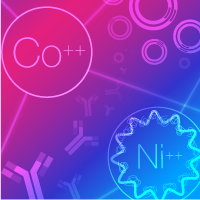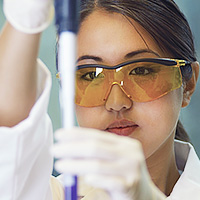When purifying proteins under denaturing conditions, we recommend preparing buffers as indicated below.
- 1X Equilibration Buffer (pH 7.4):
50 mM sodium phosphate
6 M guanidine-HCl
300 mM NaCl
- Imidazole Elution Buffer (pH 7.4):
45 mM sodium phosphate
5.4 M guanidine-HCl
270 mM NaCl
150 mM imidazole
NOTES:
- In the presence of 6 M guanidinium, the color of TALON resin will change from a pinkish-mauve to violet due to a change in metal ion hydration in response to a change in the chaotrope.
- After removal of the guanidinium, TALON resin will return to a pinkish-mauve color.
- The change to violet does not reflect any change in the physical or chemical-binding properties of the resin, but can be useful for indicating the buffer in which the resin is suspended and for following the movement of guanidinium through the resin bed.





